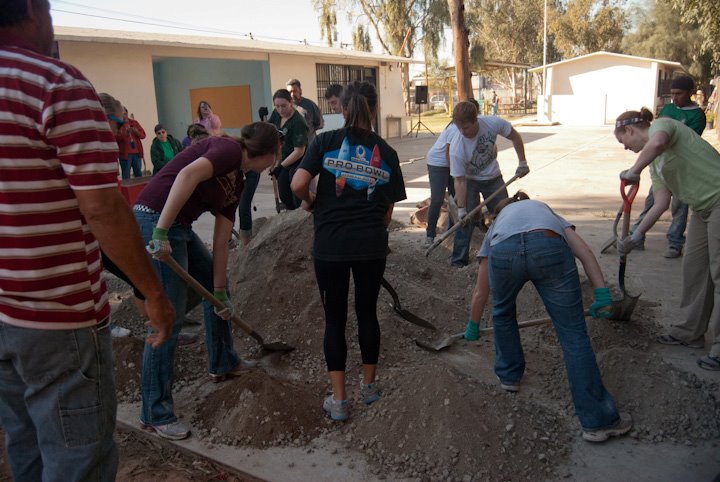As we were waiting for our plane cross-country to begin boarding I was flipping through the pages of my soon-to-be in-flight read. Patrick Lencioni expresses his research as a modern-day business fable in The Five Dysfunctions of a Team. The base element to producing a successful team, according to Patrick, is trust. Teams that suffer from an “absence of trust” incapacitate their delivery. Fittingly, I was about to fly with a new team of volunteers for an undergraduate, experiential learning trip to Northern Mexico. I noticed we already trusted each other, so I sipped my coffee, double-checked my boarding pass, and prepared to see what other observations hid in Patrick’s book.
Over the next few years the research from “The Five Dysfunctions of a Team” proved itself to me. It’s a blessing contract funding was cut from four teams over two years in my first job after college. With each introduction to a new team the turbulence of the change became less jarring and more natural. My first observational assessment became the magnitude of trust the current group of IT Consultants had for each other. I did my best to cultivate team trust as soon as I had my mental bearings on the new role, but how? Enter Onora O’Neill.
In Onora’s talk she deduces trust is something given from one person to another. Individually, it’s not trust to cultivate, but trustworthiness. Consistently being honest, reliable, and competent will beget the gift of another’s trust for you to care for. If you’re trustworthy, you’ll be trusted.
Combining Onora’s and Patrick’s findings makes being honest, reliable, and competent a workplace imperative for all professionals. A few years after watching Onora’s talk I had the opportunity to build a team and manage direct reports with my boss and another technical lead. With every new hire setting expectations was simple — We will judge each other on our ability to be honest, reliable, and competent in every aspect of our work with one another.
I’m incredibly grateful this management philosophy coalesced. In practice, when there was an issue it was rarely hidden. If someone was unsure of something they said so. When we set deadlines, we nearly always hit them. On the seldom occurrence we realized we couldn’t, it was not kept secret. We worked together to come up with a solution, and tactfully adjusted. Over time our technical competence and professional acumen grew together. When the inevitable outage happened, including in times of operator error, it was raised, we learned from it, and it didn’t happen again. In the unfortunate circumstance a team member was not meeting our mutual expectations, the criteria of trustworthiness catalyzed a swift, binary conclusion on whether or not to show them the door. Determining promotions and awards exhibited the same pattern.
There were some complexities. Bad news delivered honestly couldn’t be punished. Actions without adequate competence that resulted in undesirable outcomes had to be followed up with learning opportunities and some kind of assessment. 360 reviews were imperative as it was just as important for each individual to hold the other accountable. A virtuous environment that is mandated necessitates whomever required it to perpetually showcase the standard. Otherwise the trustworthiness of the practice itself erodes and Patrick’s dysfunctions leak in.
It’s safe to say it would’ve taken much longer to lay concrete at the school in Mexicali if I had volunteered solo. An individual can only accomplish so much by themselves. Teams naturally arise with our ambition for more. Learning to proficiently lay the foundation for a team has been an empowering skill. Maintaining a baseline of trustworthiness has proven to be the cement for our professional relationships to build on. It’s the air under a team’s wings. Once we have that, there’s no telling how far a team can go.
